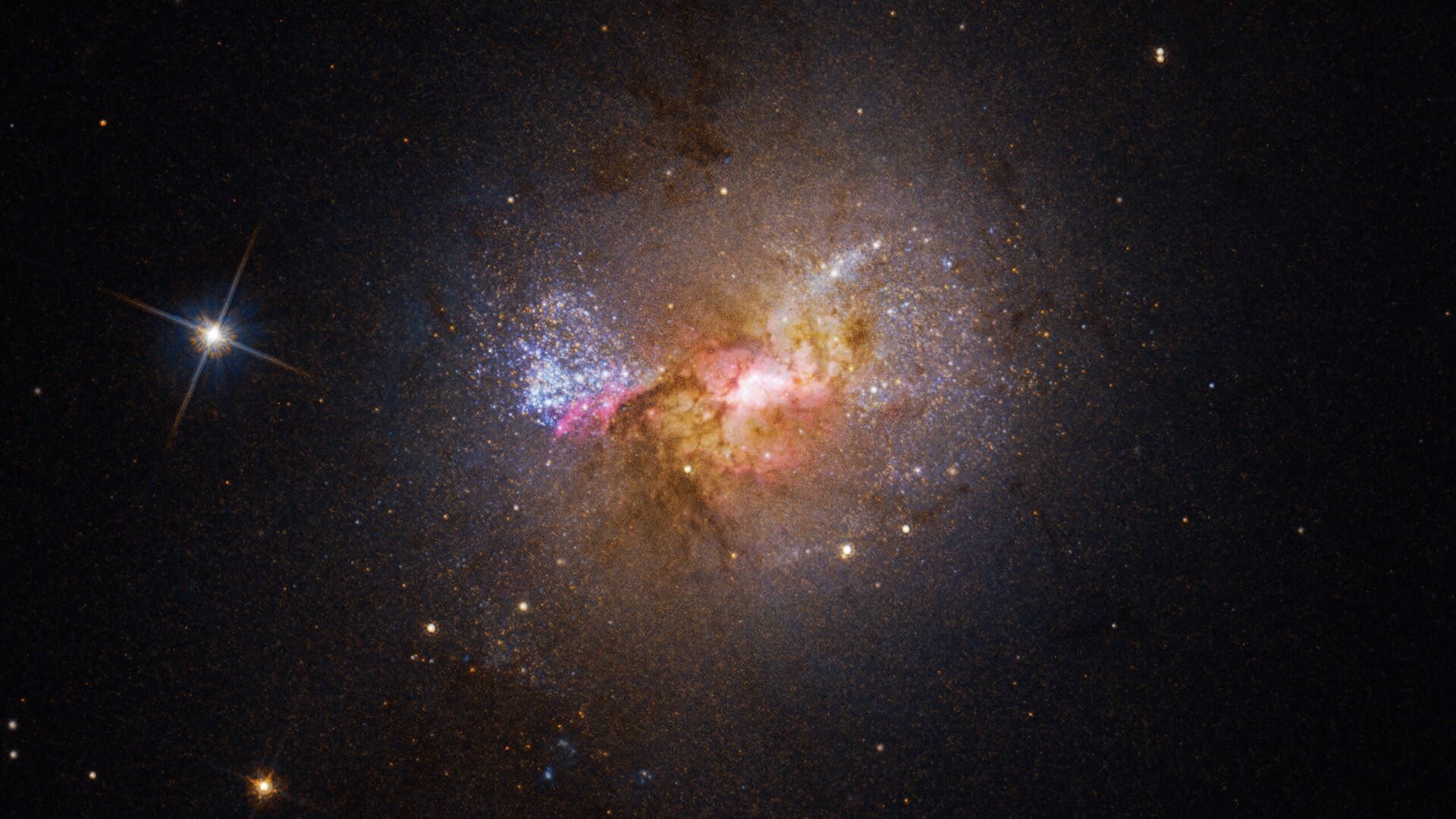https://sputnikglobe.com/20230225/scientists-get-front-row-viewing-of-black-hole-devouring-mysterious-gas-cloud-1107786080.html
Scientists Get Front Row Viewing of Black Hole Devouring Mysterious Gas Cloud
Scientists Get Front Row Viewing of Black Hole Devouring Mysterious Gas Cloud
Sputnik International
Scientists have been observing the X7 gas-dust cloud for two decades. They have now stated that the cloud will be torn apart as it accelerates towards the supermassive black hole at the centre of the Milky Way galaxy.
2023-02-25T00:46+0000
2023-02-25T00:46+0000
2023-04-12T16:58+0000
science & tech
supermassive black hole
keck observatory
cloud
space
https://cdn1.img.sputnikglobe.com/img/07e6/01/14/1092397783_0:305:2561:1745_1920x0_80_0_0_edc2232ec07aa96f0de46cce9c1bff8b.jpg
Astronomers were recently given a front seat show after zeroing in on a mysterious object believed to be an elongated gas-dust cloud that's being pulled into a supermassive black hole at the center of the Milky Way.The gas-dust cloud has a mass 50 times that of the Earth. It is currently orbiting the supermassive Sagittarius A* black hole which it said will take 170 years to pass through, but it is unlikely that the X7 will complete a single rotation before being torn apart. The closest X7 will come to Sagittarius A* is about 2036, and the cloud will dissipate soon afterwards as the black hole attracts gas and dust.Scientists have been tracking the evolution of the cloud, which turns into a gas-dust thread, since 2002. Recent images of the object indicate it is 3,000 times longer than the distance from Earth to the sun. Astronomers say the object provides some insight into the physics of extreme conditions near the center of the galaxy.X7 exhibits some of the properties observed in other dusty objects orbiting Sagittarius A* - these so-called 'G-objects' look like gas clouds but behave like stars. X7 orbits at up to 784 kilometers per second - the extremely high mass of a black hole means that everything in its neighborhood is traveling much faster than anywhere else in our galaxy.The origin of the cloud remains a mystery to scientists, but they already have a hypothesis: it could have arisen from the merger of two stars. Usually, in this process, the absorbed star ends up in a gas-dust envelope, which fits the description of G-objects, and the ejected gas produces objects like X7.The observations were published this week in the Astrophysical Journal.
Sputnik International
feedback@sputniknews.com
+74956456601
MIA „Rossiya Segodnya“
2023
News
en_EN
Sputnik International
feedback@sputniknews.com
+74956456601
MIA „Rossiya Segodnya“
Sputnik International
feedback@sputniknews.com
+74956456601
MIA „Rossiya Segodnya“
x7 gas-dust cloud, keck observatory, mauna kea, supermassive black hole, milky way galaxy, what do humans know about black holes
x7 gas-dust cloud, keck observatory, mauna kea, supermassive black hole, milky way galaxy, what do humans know about black holes
Scientists Get Front Row Viewing of Black Hole Devouring Mysterious Gas Cloud
00:46 GMT 25.02.2023 (Updated: 16:58 GMT 12.04.2023) Scientists have been observing the X7 gas-dust cloud for two decades using instruments at the Keck Observatory on Hawaii's Mauna Kea. They have now claimed that the cloud will be torn apart as it accelerates towards the supermassive black hole at the center of the Milky Way.
Astronomers were recently given a front seat show after zeroing in on a mysterious object believed to be an elongated gas-dust cloud that's being pulled into a supermassive black hole at the center of the Milky Way.
The gas-dust cloud has a mass 50 times that of the Earth. It is currently orbiting the supermassive Sagittarius A* black hole which it said will take 170 years to pass through, but it is unlikely that the X7 will complete a single rotation before being torn apart. The closest X7 will come to Sagittarius A* is about 2036, and the cloud will dissipate soon afterwards as the black hole attracts gas and dust.
"We anticipate the strong tidal forces exerted by the galactic black hole will ultimately tear X7 apart before it completes even one orbit," said co-author and UCLA professor of physics and astronomy Mark Morris.
Scientists have been tracking the evolution of the cloud, which turns into a gas-dust thread, since 2002. Recent images of the object indicate it is 3,000 times longer than the distance from Earth to the sun. Astronomers say the object provides some insight into the physics of extreme conditions near the center of the galaxy.
X7 exhibits some of the properties observed in other dusty objects orbiting Sagittarius A* - these so-called 'G-objects' look like gas clouds but behave like stars. X7 orbits at up to 784 kilometers per second - the extremely high mass of a black hole means that everything in its neighborhood is traveling much faster than anywhere else in our galaxy.
"It's a privilege to be able to study the extreme environment at the center of our galaxy," stated co-author and Keck Observatory science operations lead Randy Campbell said.
The origin of the cloud remains a mystery to scientists, but they already have a hypothesis: it could have arisen from the merger of two stars. Usually, in this process, the absorbed star ends up in a gas-dust envelope, which fits the description of G-objects, and the ejected gas produces objects like X7.
"It started off comet-shaped and people thought maybe it got that shape from stellar winds or jets of particles from the black hole. But as we followed it for 20 years we saw it becoming more elongated. Something must have put this cloud on its particular path with its particular orientation," explains UCLA assistant researcher and lead author Anna Ciurlo.

